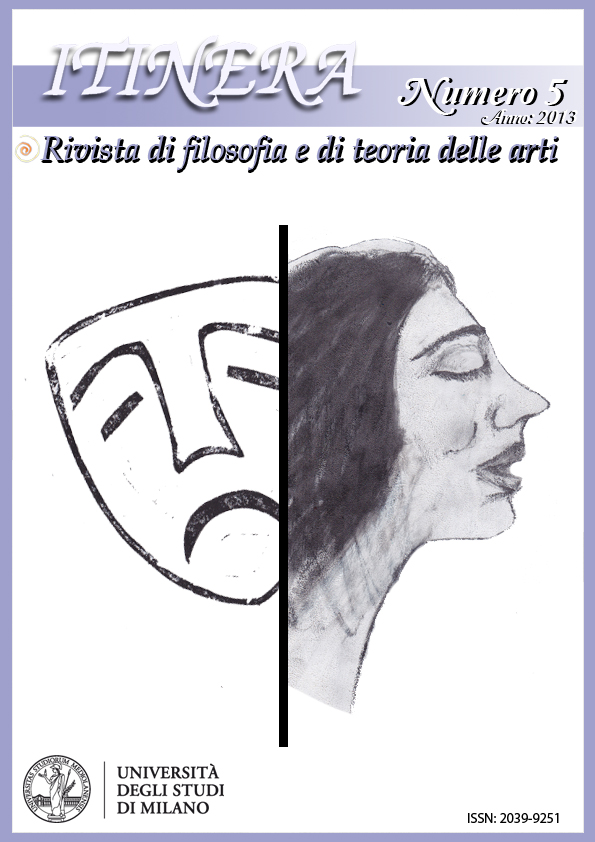Esperienza estetica e unità di coscienza
DOI:
https://doi.org/10.13130/2039-9251/2931Abstract
Jung considers the symbol as a unifying and transcendent element, as an image capable of unifying the various aspects of consciousness (sensation, intuition, feeling and thought) in a gradual rapprochement to the essential unity of being. However, this point is controversial, since the symbol is the expression of a sense that while not entirely rational, concern the cognitive sphere. Therefore what Jung attributes to the symbol (its unifying and transcendent power) was transferred to the aesthetic experience of art, where the same aspects of consciousness in the symbol are supported by perceptual elements, according to a level of completeness and unity that only the aesthetic experience of art can achieve.
Riferimenti bibliografici
JUNG, Carl Gustav, Tipi psicologici, tr. it. di C.L. Musatti e L. Aurigemma, Bollati Boringhieri, Torino 1977.
JUNG, Carl Gustav, L’io e l’inconscio, tr. it. di A. Vita, Bollati Boringhieri, Torino 1967.
LEIBINZ, Gottfried Wilhelm, “De rerum originatione radicali”, in G.W. Leibniz, Scritti filosofici, a cura di D.O. Bianca, UTET, Torino 1967.
Dowloads
Pubblicato
Fascicolo
Sezione
Licenza
Gli autori che pubblicano su questa rivista accettano le seguenti condizioni:
1. Gli autori mantengono i diritti sulla loro opera e cedono alla rivista il diritto di prima pubblicazione dell'opera, contemporaneamente licenziata sotto una Licenza Creative Commons - Attribuzione - Condividi allo stesso modo 4.0 internazionale che permette ad altri di condividere l'opera indicando la paternità intellettuale e la prima pubblicazione su questa rivista.
2. Gli autori possono aderire ad altri accordi di licenza non esclusiva per la distribuzione della versione dell'opera pubblicata (es. depositarla in un archivio istituzionale o pubblicarla in una monografia), a patto di indicare che la prima pubblicazione è avvenuta su questa rivista.
3. Gli autori possono diffondere la loro opera online (es. in repository istituzionali o nel loro sito web) prima e durante il processo di submission, poiché può portare a scambi produttivi e aumentare le citazioni dell'opera pubblicata (Vedi The Effect of Open Access).





